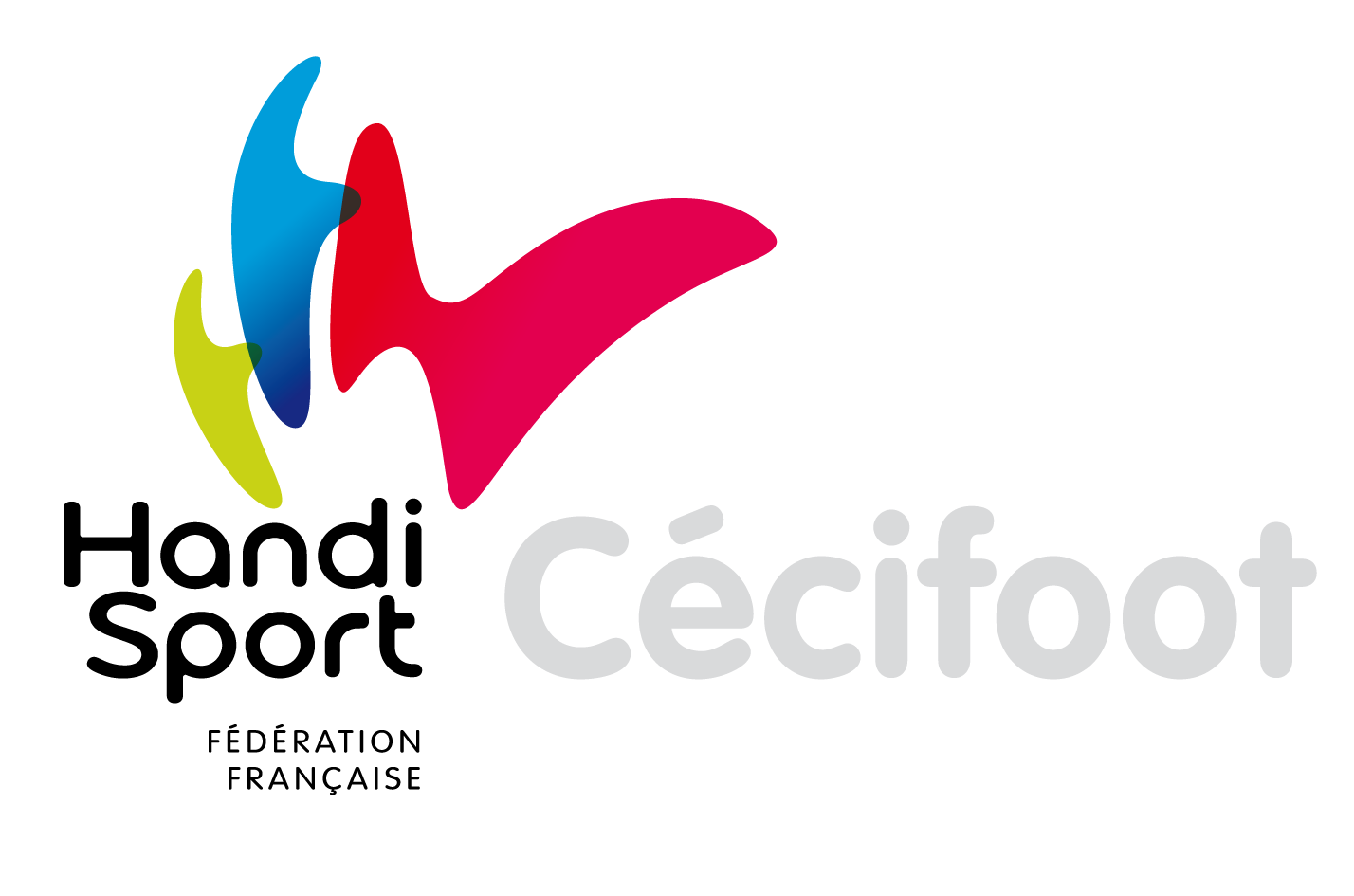|
Getting your Trinity Audio player ready...
|
The blind football (“cécifoot” in french) is a Paralympic discipline, it is the adaptation of soccer for visually impaired people. In France, the French Federation of disabled sports is responsible for the management of licensed athletes and competitions.
Players compete in teams of five (four visually impaired players and one goalkeeper) and play in two distinct categories according to their level of visual impairment:
- B1 category (Blind 1) : for blind or visually impaired players. All players in this category will be placed on an equal situation by playing with an opaque eyeshade and blackout eye patches. The goalkeeper is sighted.
- B2/B3 category (Blind 2 / Blind 3) : for visually impaired players only. The goalkeeper can be sighted or visually impaired. As for the players, their visual acuity of the best eye, after correction, must not exceed 1/10 (tolerance at the national level up to 2/10) or exceed 20° of visual field. For more details, a player classified B2 has a maximum visual acuity of 1/20 and a maximum visual field of 5°. A B3 player has a visual acuity between 1/20 and 1/10 and a visual field between 5° and 20°.
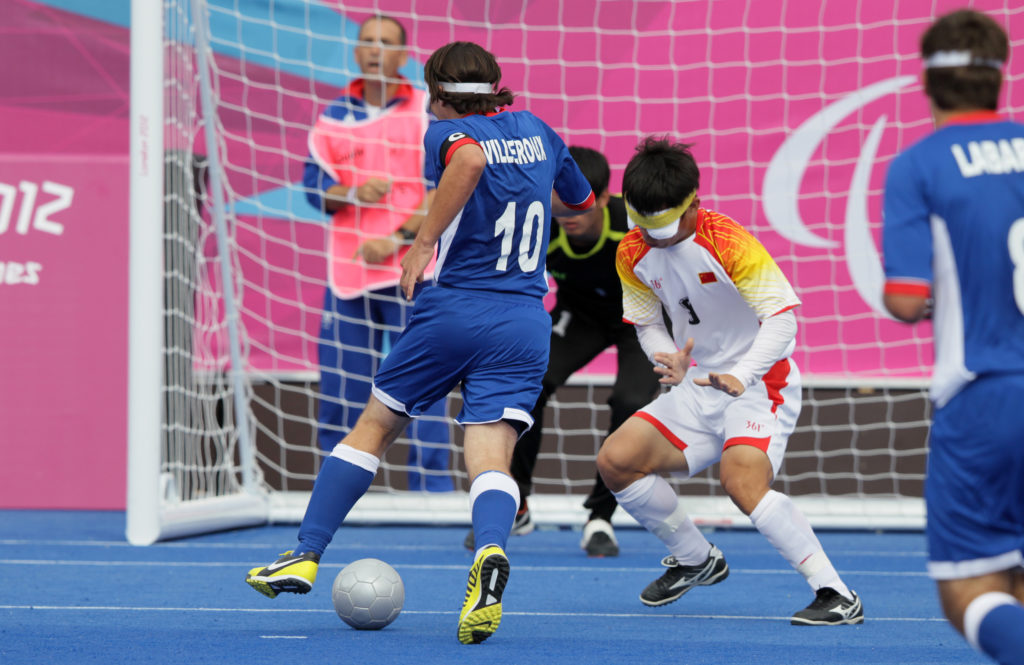
Picture credit : Flickr Handisport, G Picout, France Paralympique, All rights reserved
At the national and international level, this classification is determined by a accredited ophthalmologist after an official examination which may be definitive or to be re-evaluated according to medical findings.
NB : only category B1 is represented at the Paralympic Games, every four years.
Origins of blind football
It seems difficult to have an exact date when this adaptation of football for the visually impaired first appeared. According to the International Paralympic Committee, it seems that as early as the 1920s in Spain, young players were already playing soccer in the playgrounds of special schools for blind children.
The real formalization of the sport came in Brazil in the 1960s. The South American country introduced the basic rules and the “five against five” format, which is still used today. However, it was not until 1974 that the first national championship was organized in Brazil. Little by little, other countries followed and developed the discipline, notably Spain.
The arrival of blind football in France
It was in 1987 that blind football arrived in France under the impulse of Mr. Julien Zéléla. He created the “Association Sportive Cécifoot Saint-Mandé” (“Blind Football Sport Association of Saint-Mandé“) which marked the beginning of the structuring of this sport in our country. This historic club, located not far from Paris in the Val de Marne, is still active and has one of the most complete records of success at the national level.
The very first French blind football Championship officially started at the end of 1998 while the first French Cup took place in 2000. These events are now held every year.
The international recognition
In 1996, the International Blind Sports Association (IBSA) officially recognized blind football as a sport. The main purpose of this step was to federate all the different practices of this sport, which can vary from one country to another, by instituting common rules, valid throughout the world.
This was a first step towards a mandatory harmonization for future international meetings.
The following year, in 1997, IBSA organized the first European Blind Football Championship in Barcelona, Spain, and the first American Championship in Asuncion, Paraguay.
The events accelerated again with the first ever world championship of blind football in Brazil in 1998. The host country won the inaugural event. For many years, Brazil dominated the field, winning most of the titles of “world champion”, sometimes losing out to its main rival, Argentina.
Athens 2004, the year of the Paralympic consecration
Without a doubt, the year 2004 will remain the most important event in the history of blind football with its recognition as a “Paralympic discipline”. Thirty years after the first championships were held in South America, players could finally claim the ultimate title for any sportsman, that of the greatest of competitions : the gold medal of Paralympic champion.
Once again, Brazil won the first-ever Paralympic gold medal in blind football after an epic match against Argentina : 3-2 on penalties after a 0-0 draw in regular time.
The popularity of blind football continued to grow with the creation of new teams around the world.
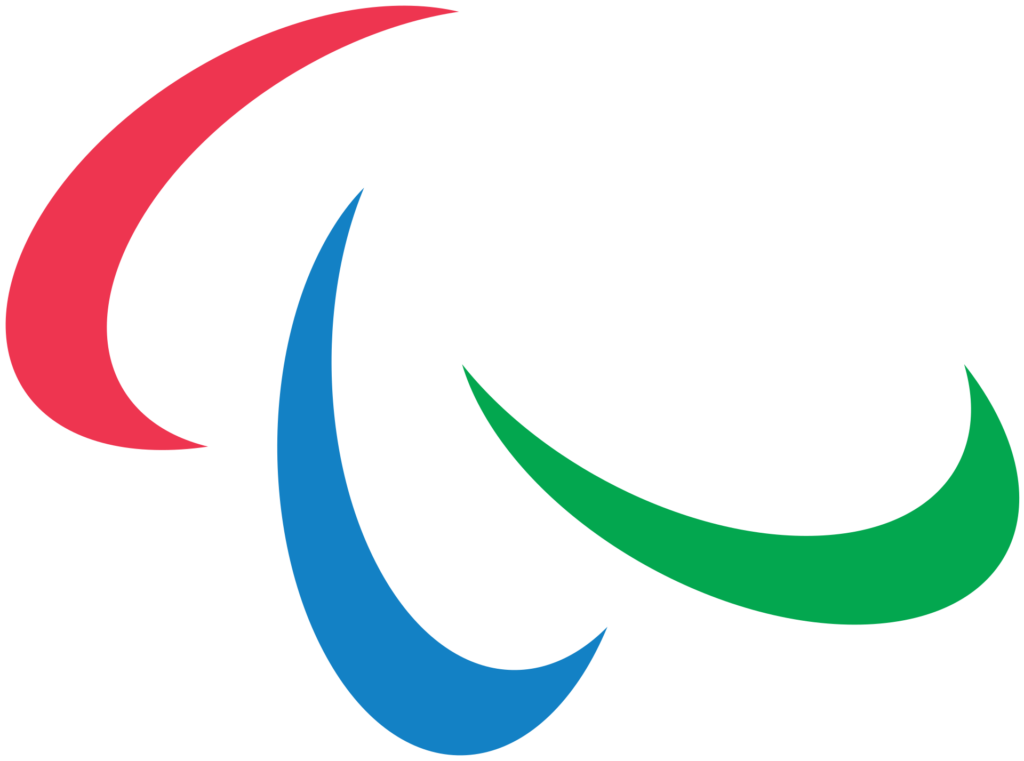
Official logo of the International Paralympic Committee
From now on, the world championships of the discipline are held every four years, alternating with the Paralympic Games. The continental championships allow the national teams to obtain their qualification for these reference competitions.
2012 London Paralympic Games : France’s year
This was an unmissable year for the French blind football team. During the Paralympic Games in London, “les Bleus” managed to reach the final of the tournament. Unfortunately, they lost 2-0 against Brazil but returned to France with a Paralympic silver medal. This one remains the best result of the French team in an international competition. This event will have a “springboard” effect for the discipline which will benefit from an exposure and especially from means without precedent in our country.
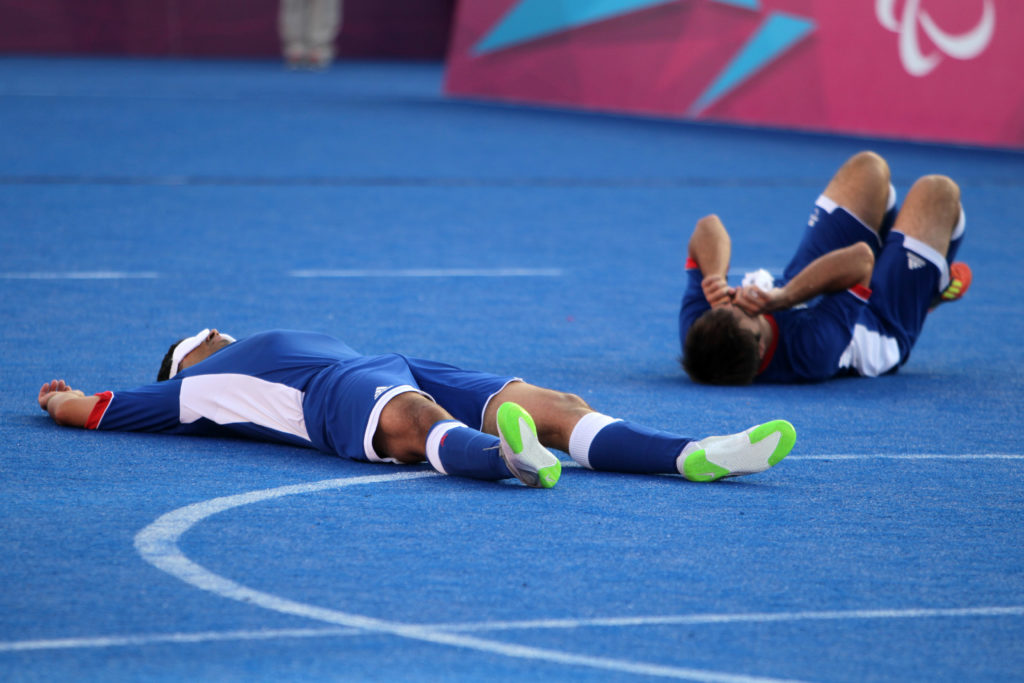
Picture credits : Flickr Handisport, G Picout, France Paralympique, all rights reserved
Blind football nowadays in France and in the world
In France, the discipline is managed from the French Federation of sports for disabled by a Sports Director in charge of its development and administration. Each year, a French championship is organized in each category (B1 and B2/B3) as well as a French cup. The country also has a B1 national team with a coach whose mission, as in classical soccer, is to recruit the best national players and develop them towards performance. Since 2019, a French U23 team has even been created in order to ensure the succession of the senior collective and to prepare young players for the demands of the top level.
Worldwide, blind football is now played on most continents. Even if the main activity remains in Europe and South America, the development is underway in many countries. In different parts of the world, international tournaments are regularly held to qualify for the world’s biggest competitions. Just as there is a European championship, there is also an African, Asian and Central American championship. Fearsome teams are emerging on the international scene, such as China, Iran, Japan, Morocco, Mali and even Thailand. North America is still the exception with a late development linked to a more restricted practice of classic soccer in this region of the world.
Nevertheless, blind football continues to develop in France and around the world. The discipline seems to have a bright future as its recognition and media exposure grows.
The next step for blind football in France?

The history of blnd football has shown us that the most significant leaps forward took place in parallel with major events such as the Paralympics. It seems rather likely that the next step in the development of this sport in France will take place in Paris in 2024, offering the field unprecedented media exposure.
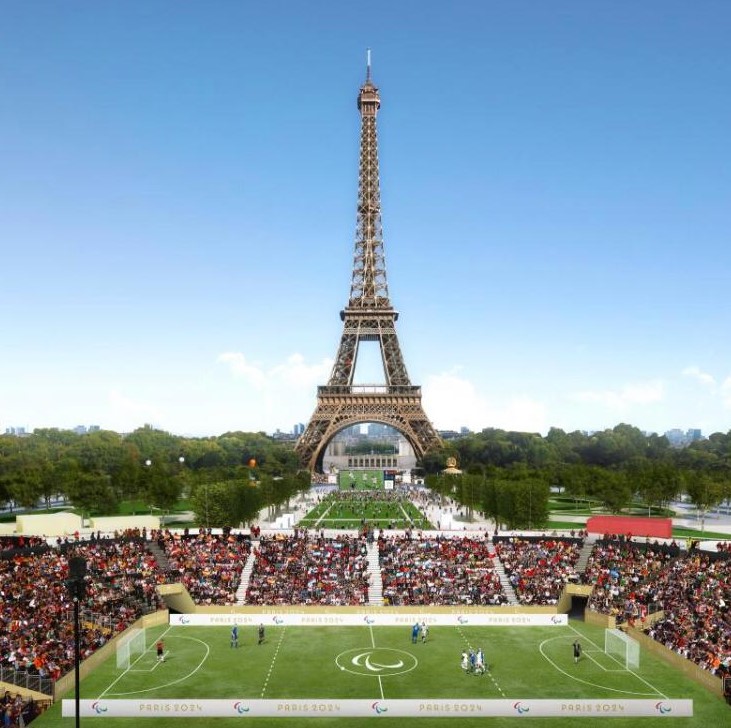
Vous aimez cet article ? Aidez-nous à le faire connaître en le partageant :

